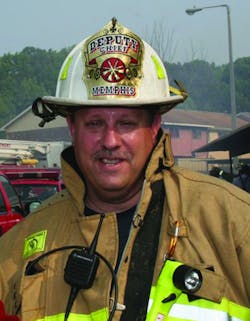Those Pesky Civilian Helpers
By GARY LUDWIG
PLEASE USE THIS NEW BIO (NEW FOR JANUARY)
GARY LUDWIG, MS, EMT-P, a Firehouse® contributing editor, is a deputy fire chief with the Memphis, TN, Fire Department. He is chair of the EMS Section for the International Association of Fire Chiefs (IAFC), was appointed to the National EMS Advisory Council by the U.S. Secretary of Transportation and is a member of the International Association of Fire Fighters (IAFF) EMS Standing Committee. Ludwig has a master’s degree in business and management and is a licensed paramedic. He can be reached at www.garyludwig.com.
pull quote:
What to do when unsolicited physicians, nurses or other medically qualified people show up and offer their services.
I cannot tell you how many times during my career I have had a civilian come up to a scene and declare, “I am a (fill in the blank). Is there anything I can do to help?” Usually when they do this, you are in the middle of dealing with a critical patient, have both hands tied up, and you may be even cradling a phone or radio to your ear.
Some of those who have come up to my scenes have been memorable. During a mock-disaster exercise in St. Louis, a car screeched into the scene, a man got out of the car and announced he was a physician from the American Red Cross and that he was in charge. Neither the incident commander nor I had ever seen this man before and certainly he had not attended any of the planning meetings. He was completely unknown to us, dressed in civilian clothes and driving his personal vehicle. After a brief conversation, he tried to tell us that during a disaster, when the American Red Cross is mobilized, it is in charge. Sorry! In a polite way, he was told he was not in charge and we are certainly not turning over all our personnel and assets to a stranger.
In another scenario, I had a person shot in the abdomen in a bar in south St. Louis and a physician who was driving by saw all the commotion and decided to stop and see whether he could help. He declared himself a physician to the police officers outside and they let him through the doors into the scene. Once inside, he identified himself as a physician and began issuing orders to the paramedics on the scene for the critical patient. I asked the man to show up some identification that he was a physician. He could not and became somewhat indignant that he was even being questioned. The conversation went downhill from there and I asked the police officers to remove him from the scene when he became even more incensed about being questioned regarding who he was.
Civilian bystanders who show up on scenes are a challenge to many firefighters and EMS responders. Do this job long enough, and eventually someone is going to stop, declare who they are and offer to help. Sometimes, they may be already on the scene when you arrive. This is especially true in large-scale disasters when unsolicited help or self-dispatched physicians, nurses or other medically qualified people will show up and offer their services.
These doctors and nurses are well-intentioned and more than willing to provide their expertise to help a patient. The problem is that even though physicians and nurses may have additional medical education and training, they are not trained nor do they typically have experience working within the medical or fire command structure of an emergency incident.
This lack of knowledge can often lead to confusion in regard to responsibility for out-of-hospital patient care, overall observance to your EMS system protocols and online medical authority. In many cases, the difference between appropriately using these good Samaritans and pushing them away them depends on your approach to handling these situations.
The first thing you should do when physicians or nurses identify themselves as such and want to help is to ask for identification to prove they are what they say they are. Then determine their background. Is this a physician who works in the busiest emergency room in the state or is the physician a dermatologist who burns off warts most of his day? If a physician has the background and knowledge that would definitely benefit the patient, ask him or her whether they are willing to accept responsibility for the patient if online medical control relinquishes authority to them? If they are not, there is no point in going any further.
Don’t forget that you are working under protocols and online medical control, and possibly even regional authority. There are legal hurdles to jump if you step outside your granted authority and turn it over to someone else who may not be part of the system. In some systems, protocols mandate that if you relinquish medical control and online medical control hands over control to the physician on the scene, that physician must accompany the patient to the hospital and must be willing to sign the patient-care report for any orders given.
Of course, the situation changes dramatically if the situation is a life-hazard environment and personal protective equipment (PPE) and/or self-contained breathing apparatus (SCBA) is needed. If someone is trapped in a car and extrication is occurring, the physician should not be allowed into the scene. After the patient is extricated, it is a different story.
There is much more that can be discussed when it comes to physicians and nurses who offer their unsolicited help on emergency scenes. It is important to remember that there should be a careful balance between what is best for the patient, what can be legally done, and the qualifications and background of the doctor or nurse.
FOR MOUSE ICON:
For more news and training on EMS, visit http://EMSWorld.com/.
